… it doesn’t matter how experienced we are, we all entered uncharted waters as we welcomed our students back to school.
As one Head Teacher has put it:
So, where do we start when our students are in so many different places mentally? What might help teachers and students to navigate and inform a ‘recovery curriculum’? One thing is certain, teachers will need every teaching tool available to get their students’ learning back on track and un-jam the brakes on learning.
Find out where your students’ learning power is now.
A really useful way to bring your students’ Learning Power back to life is to gain a sense of where they are now, how they see themselves as learners, how their learning dispositions have changed, for it’s their learning dispositions that will have been the casualties of lockdown, and importantly, which habits to work on now that they have returned to your care.
You don’t have to guess or estimate, you could rapidly gain a valid picture, from each and every student, of how they view themselves as learners now.
The Effective Lifelong Learning Inventory
ELLI (Effective Lifelong Learning Inventory) is a valuable tool that can tell you how your learners are currently disposed to learn, how strong they feel their learning dispositions to be, how their learning habits work together to make a successful learner. ELLI offers a unique picture of how a student sees themselves as a learner saving you the observation and guesswork you would otherwise need to make a judgement! And the really clever bit is that it will enable you to check and track the progress you are making with your nudges or interventions.

ELLI (Effective Lifelong Learning Inventory) assesses Learning Power. It has been research-validated, both academically and operationally, among more than 100,000 people globally from all walks of life but most particularly among schoolchildren grappling to understand how they learn and thereby, improve their performance.
Models of the building blocks of learning
The research teams, working in Bristol in the UK and at Penn State University in the USA identified 7 basic building blocks, or dimensions, that hold the key to our capacity for learning.
Many of you will quickly realise that these seven dimensions are the basis of what you know as Building Learning Power.
Explore Learning Power: how ELLI's 7 became BLP's 17
ELLI’s 7 dimensions are:
- Changing and Learning
– our disposition to grow as a learner - Critical Curiosity
– our disposition to ask questions to ‘get to the bottom of it’ - Meaning Making
– our disposition to make connections between past information / experience and new knowledge - Creativity
– our disposition to think ‘outside the box’ - Resilience
– our disposition to be robust when the going gets tough - Strategic Awareness
– our disposition to be aware of and in control of our learning - Learning Relationships
– our disposition to learn with and from others
- Changing and Learning
From Learning Power to Building Learning Power
Learning Power’s premise is that learning can be learned; it is a learnable craft. However, the seven dimensions that have become the pillars of ELLI’s assessment practice needed to be translated into the language of schools.
Firstly, the seven dimensions were divided into four major Learning Power dispositions, often known as ‘the 4Rs’:
- Resilience – broadly covering the emotional aspects of learning
- Resourcefulness – broadly covering the cognitive aspects of learning
- Reciprocity – broadly covering the social aspects of learning
- Reflection – broadly covering the meta-cognitive aspects of learning
Linking Learning Power to the broad aspects of learning theory (cognitive, emotional, social) helped teachers to get to grips with the issues.
Secondly, the 4R dispositions were deconstructed to reveal 17 Learning Power behaviours, sometimes known as ‘learning muscles’. These named behaviours —such as Listening, Reasoning, or Planning — were drawn from the items in the rich lists of principal characteristics of the seven dimensions. Because these behaviours are specific in nature they can be individually trained, nurtured and exercised. This deconstruction serves to broaden and strengthen the language of learning, with particular reference to school settings. Using and extending the language in this way adds breadth and depth to how teachers and learners talk about, understand and improve learning.
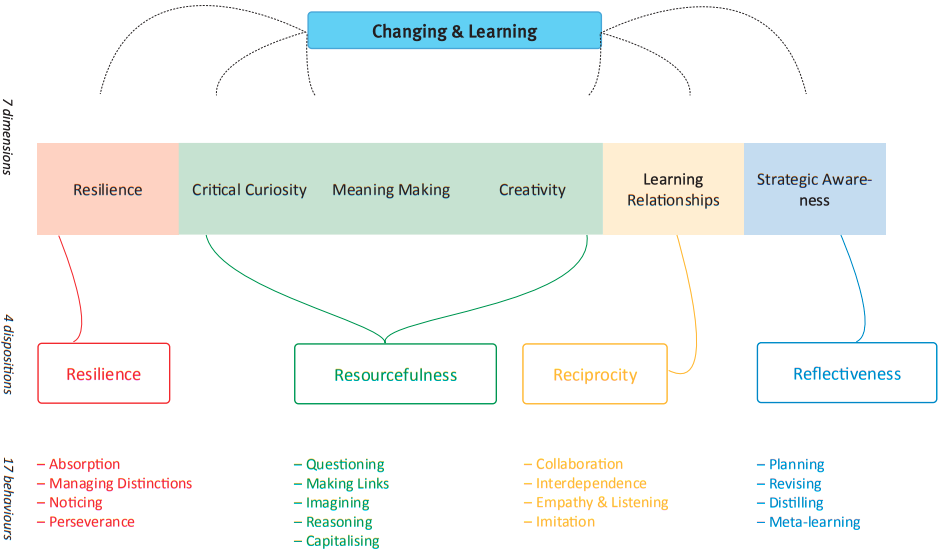
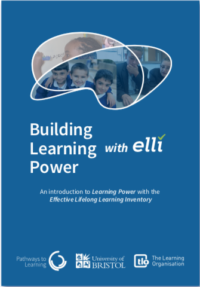
Find out more about how Building Learning Power and ELLI work together to build better learners in the book Building Learning Power with Elli
ELLI’s attributes and ease of use
ELLI has some valuable attributes … it tracks changes in your students’ profiles as their responsiveness to learning changes AND it is highly sensitive to the learning environment. It doesn’t pigeon-hole the student learner but their learning profile changes with them.
Student Engagement
Input: students answer an on-line questionnaire. Each question has only 4 possible, repeated answers, ∙ very like me ∙ quite like me ∙ a little like me ∙ not like me.
Output: an immediate, but simple, spidergraphic with a student-friendly single page explanation. Students can then learn more about their profile by discussing it with one another and their teachers.
Patterns of learning; what can you discover?
Take a look at the sort of patterns that emerge from an ELLI spidergraphic, what they tell you about students, what they might help your students to do for themselves and how you might use them with your students.
John is in Year 10 and has always been recognised by his teachers as one of their more reluctant learners.
John’s profile bears out his teachers’ observations but it also reveals that he wants to learn. His scores in Learning Relationships, Strategic Awareness and Resilience suggests that he seeks help from those around him and is trying to keep going. His higher score for Making Meaning suggests that he is trying to make sense of the content he is being presented with. A lower score for Changing and Learning suggests a lack of self-belief and frustration at his own lack of progress.
A possible source of John’s frustration shows up in his lower scores in the cognitive domains of Critical Curiosity and Creativity. In class this comes out as a reluctance to ask for help and a fear of making a fool of himself. He is yet to be confident enough to ‘find’ his imagination but is hiding a natural resourcefulness, indicated by a particular strength in Meaning Making. (which makes this quite an unusual profile)
With this sort of information what would you do to help John? How would you nurture his fragile curiosity and build his awareness of the usefulness of making mistakes?
Scarlett went into Yr 6 when she returned to school.
This profile shows that Scarlett is likely to have been a model student during lockdown … one of those who would not have wanted to miss out on anything that would allow her ‘to get on’ and progress with her studies.
Scarlett’s profile tells us that she has a high tendency to be naturally resourceful although Critical Curiosity needs to be nurtured in order to give her more confidence to find things out for herself.
Scarlett’s resilience is to her credit but care will be needed to ensure that she builds more positive Learning Relationships.
With this sort of profile what advice would you give to Scarlett to enable her to nurture her own learning power?
Robert is in the 6th Form and a Maths and Physics student.
Robert’s profile is fairly typical for someone who favours the sciences and maths in particular. His high scores in Critical Curiosity and Making Meaning suggests that he knows how to pursue ‘knowing more’ and prefers to go his own way in solving problems.
Strong Meaning Making and Critical Curiosity scores are usual in those with a scientific bent, but rarely seems to extend to Creativity.
Teachers like to see these resilience, investigative and connectivity skills so we may not look any further. The danger with Robert’s perceived lack of creativity could hinder his learning at higher levels where he will need to be more receptive to hunches and inklings.
With this sort of profile how would you help a student to tap into, and nurture, their creativity; to think outside the box.
Keep track of changes
ELLI tracks progress and records how successful the interventions to strengthen learning weaknesses have been. These 2 examples record both a positive outcome … and the more negative
Gain a bigger picture
To complete the picture … you can capture and explore the development of learning habits across the seven dimensions for a group, a class or the whole school recorded in bar charts. Such information could be invaluable in helping you to cultivate and strengthen your students’ learning habits.
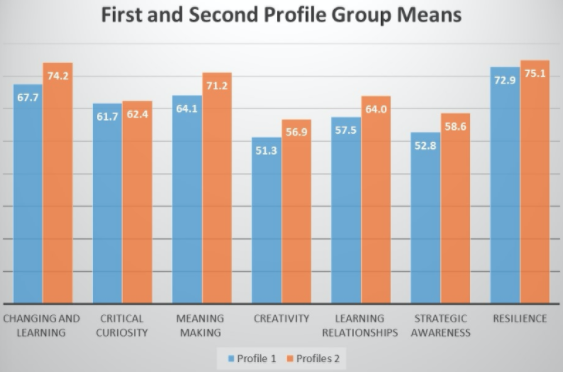

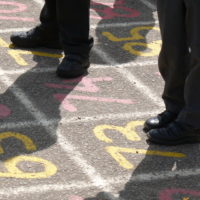
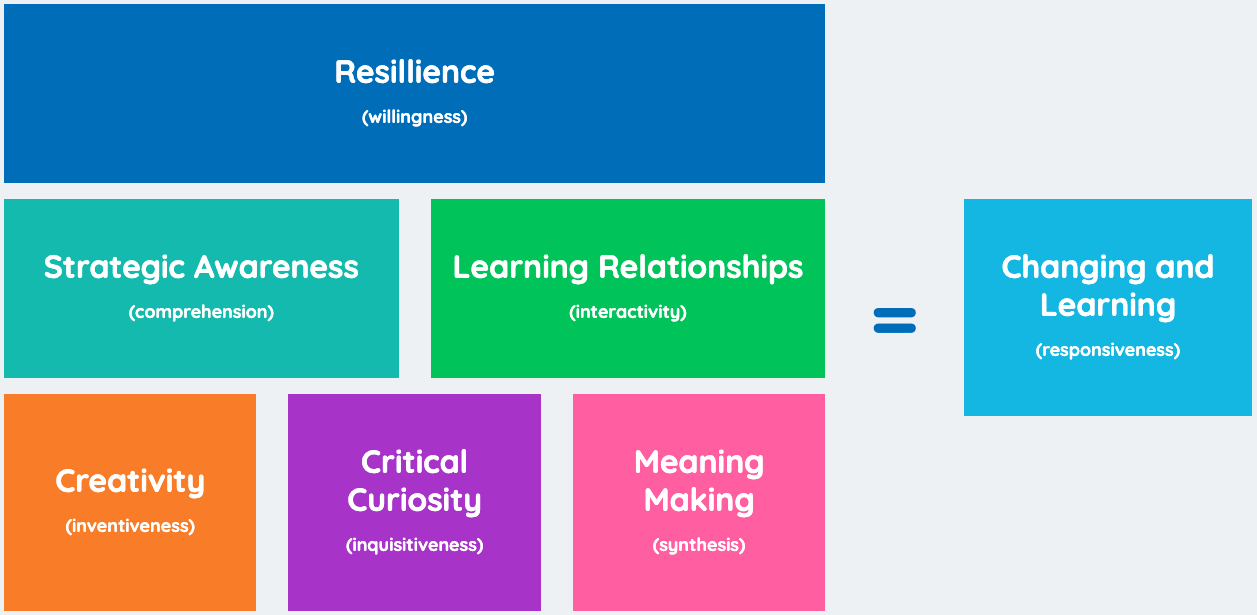
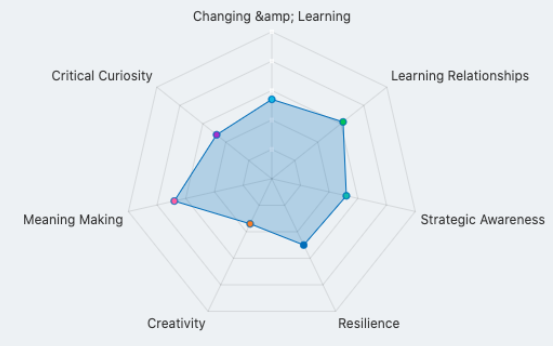
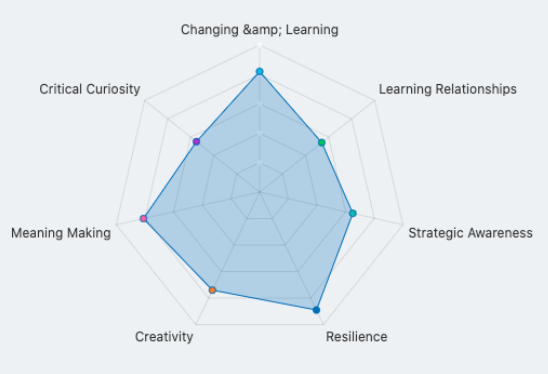
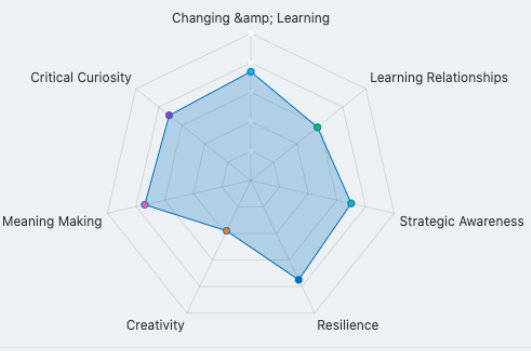

No comments yet.